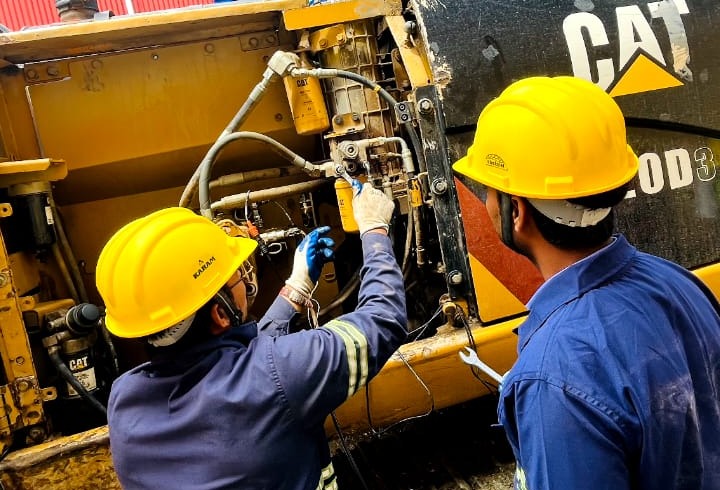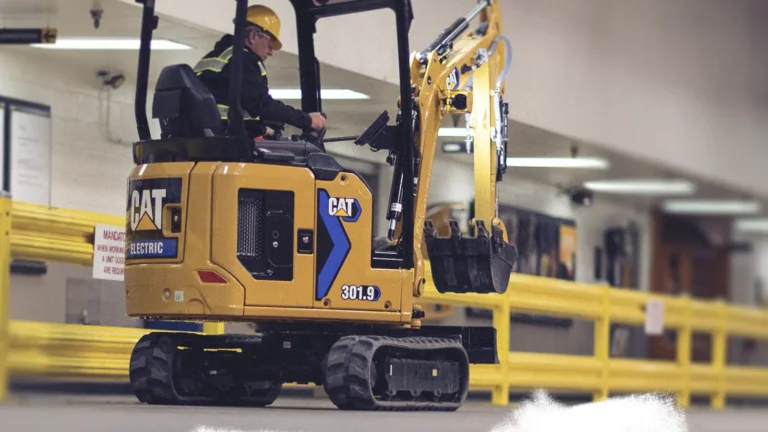Heavy machines have always amazed people since its inception, but few are as impressive as the Bagger 293. This giant bucket wheel excavator is not only used for mining but is also a record-breaking machine that changed how we see industrial equipment.
Made in Germany for brown coal digging, the Bagger 293 is so tall and massive that it holds Guinness World Records for its size. If you ever thought about how one machine can move entire hills of earth or wondered how it works in coal mines, this article explains it all.
The Story Behind the Bagger 293:
The Bagger 293 wasn’t built overnight. This enormous mining machine is the result of years of detailed work by German engineers. Its official name is the MAN TAKRAF RB293, and it was designed and put together by TAKRAF, a company with strong roots in East Germany’s industrial history.
Work on the machine started in the early 1990s and wrapped up around 1995. That came after nearly a decade of planning, engineering, and assembling, very much like the process behind its older sibling, the Bagger 288. The cost at the time was massive, around $100 million, which says a lot about the effort it took to make every part strong enough to handle the heavy job ahead.
The Bagger 293 was built for Rheinbraun, a coal mining company that later became part of RWE Power AG, one of Germany’s top energy producers. It was made specifically for use in the Hambach open-pit mine in North Rhine-Westphalia, near Niederzier and Elsdorf. That mine is enormous in itself, stretching across more than 33 square kilometers and digging down about 370 meters, making it one of the world’s largest open-pit mines.
Its main job is to clear away the soil and rock on top of the lignite (brown coal) layers underground. Just getting the Bagger 293 into place was a massive project, since it only moves at about 0.6 km/h, it took weeks to slowly travel from where it was built to where it would start work.
Once in action, the machine became a key player in pulling roughly 40 million tons of coal from Hambach each year. But since Germany has plans to completely stop using coal by 2038, it’s hard to say what will happen to machines like this in the future. For now though, the Bagger 293 still stands as one of the most remarkable examples of what people can build, proving how far human skill and engineering can go when it comes to making machines for massive, difficult work.
A Look at the Details: Size, Power, and Weight of the Bagger 293
The Bagger 293 really sets records, holding the Guinness title for the tallest land vehicle along with its older brother, the Bagger 288. Here’s the specs of the vehicle:
Height: 96 meters (315 feet), twice the Statue of Liberty.
Length: 225 meters (738 feet), longer than two football fields.
Bagger 293 Weight: 14,200 tonnes (31 million pounds), heavier than 2,000 elephants.
Its heart is the bucket-wheel, a 21.3-meter (70-foot) drum with 18 buckets, each scooping 15 cubic meters of dirt. The wheel spins, dumping earth onto conveyors that carry it away, like the parts of transmission system in an engine moving power efficiently. It rolls on 12 crawler tracks, each 3.8 meters wide, at a snail’s pace of 2–10 meters per minute.
Powering this giant takes 16.56 megawatts from an external source, enough for a small town, though some say it hits 56 megawatts at full tilt. Just five operators run it, using sensors and automation for precision. A Bagger 293 size comparison paints a wild picture: it’s taller than Big Ben and as long as the Great Pyramid’s base. Made with heavy steel and strong alloys, this machine is built to keep going for years. It’s kind of like how a good transmission part holds up well and helps avoid those common Honda Pilot transmission troubles.
How the Bagger 293 Works: Digging Like a Titan
The Bagger 293 isn’t just big, it’s a giant that eats through the ground like nothing else. Its boom, almost the length of a football field, carries a huge bucket wheel that keeps spinning, scooping up soil and dumping it onto long conveyor belts running across the machine. Those belts haul away nearly 240,000 cubic meters of earth in a single day, clearing ground for coal mining. Over at Hambach, this beast digs out close to 250 million cubic meters of soil every year just to uncover the lignite lying underneath.
Frequently Asked Questions
How much does the Bagger 293 cost?
It was built in 1995 at an estimated cost of $100 million (equivalent to a lot more today with inflation).
How many people operate it?
Surprisingly, just five operators are needed to control the entire machine thanks to automation.
Can it move on its own?
Yes, but very slowly. It crawls forward at a top speed of 10 meters per minute.
Where is the Bagger 293 today?
It is currently stationed in the Hambach open-pit mine in Germany, though its future is quite uncertain as the coal mining winds down.
What makes it special?
Its size, capacity, and continuous excavation system make it the largest and most productive land vehicle in the world.





